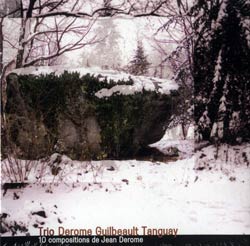
Ten new compositions by Jean Derome played by Trio Derome Guilbeault Tanguay on this first album of sophisticated group playing with ample room for improvisation.
In Stock
Quantity in Basket: None
Log In to use our Wish List
Shipping Weight: 3.00 units
EU & UK Customers:
Discogs.com can handle your VAT payments
So please order through Discogs
Sample The Album:
Jean Derome-saxophones, flutes
Normand Guilbeault-contrebasse
Pierre Tanguay-percussion
Click an artist name above to see in-stock items for that artist.
UPC: 771028112128
Label: Ambiances Magnetiques
Catalog ID: AM_121_
Squidco Product Code: 2947
Format: CD
Condition: New
Released: 2004
Country: Canada
Packaging: Cardstock foldover
"A cult Montréal jazz band, Trio Derome Guilbeault Tanguay is loved for its irresistible swing, audacity, sophisticated group playing, highly original repertoire and authentic style. All these elements are the result of a vast comprehension of the history of jazz, not to mention a vigorous proposition as to its reinvention. With this first album, the Trio delivers ten new compositions by Jean Derome.
Each note of the bass line in Marcher sur des braises (Stepping on Hot Coals) has been written slightly before the beat, as if one wanted to touch the stove element (or to step on hot coals!) and was afraid to get burned. The structure of the piece is rather standard (it evokes Impressions or So What), but the shifts between 8-bar and 6-bar sections give it a distinctive drive.
As indicated by its title, Vérone (Verona) was written in Verona, Italy, while on tour with Fred Frith and Keep the Dog in the early '90s. The piece is built over a D pedal but presents different modal colors, particularly in the B section where the harmony explores modes in a tense relationship with the fundamental. Each musician is constantly presented with the option to play the ostinato or to play a slow or double-time walking line. The A section is in 4/4, but there is a 3/4 bar hidden in there somewhere in order to destabilize the jazzmen's tendency to play on auto-pilot. The B section is in 7/4.
L'Africaine (The African) adopts a meditative mood established by an ostinato bass riff switching between 6- and 7-beat bars. The head consists of only a few notes followed by an ever-changing modal improvisation inspired by the flexibility and rhythmical creativity of African singers. As for Pierre Tanguay's percussion work: he is playing on the wood logs used to heat the cottage where we were recording the album.
Pangolin is an old composition. It has rarely been performed live, but I often play it on the piano. The head appears three times, but the accompaniment for the third occurrence shifts from 12/8 to 4/8 time, giving the impression that the floor has just vanished under your feet. The pangolin is a large, massive, slow and short-legged mammal resembling an anteater or wolverine with scales.
Étymologie (Etymology) goes back to the early '80s. It was written as a tribute to Ornette Coleman. The piece is only 7 bars long and is highly difficult in terms of rhythm and harmony, mostly because of the rhythmic shifts of the chord chart. The head is reminiscent of the speech-singing style of some of Ornette's heads, but it also refers to Monk. Étymologie was embedded in the piece Les Aventures de Sacha le chat, released on the LP Le retour des Granules.
La baignade (The Swim) was written for Jeannine Gagné's film Au fil de l'eau. The piece is built over a bass ostinato switching rather unpredictably between bars in 5/4 and 6/4. The head introduces more rhythmic rifts, including some 5/8 figures dancing and hovering over the bass line.
Que'kun! (Som'one!) is the word my daughter Raphaëlle used to utter as a baby whenever she heard someone at the door. I also remember she used to say "noune" for mouche (fly) and "wawane" for fromage (cheese). The 3/4 piece is in AAB form, but the B is only subtly different from the A. Que'kun! evokes an unknown and unexpected visitor knocking at the door; he represents both a threat and a chance for change.
Fluide (Fluid) is a piece without any fixed bars, written à la a Gregorian theme. Saxophone and bass play the head to the octave, and then the several scale options opened by the head are investigated and freely developed through improvisation.
Cannelle (Cinnamon) is probably the oldest piece appearing on this album; I must have written it in the mid-'70s. I often performed it on flute (I only played the flute back then) with the bassist Claude Simard, who played in Nébu, the group started by the pianist Pierre St-Jacques. Cannelle's head reminds me of the music of Dave Holland and I dedicate it to him. The apparent simplicity and the jovial, almost "Country & Western" mood of the piece hide in fact some fearsome rhythmic and harmonic complications.
Michka was premiered by the trio for the music of the film La position de l'escargot by Michka Saäl. The music of this film has been composed by the Derome Guilbeault Tanguay trio, almost entirely by freely improvising to the images (the same method Miles Davis used for Louis Malle's film Ascenseur pour l'échafaud), except for Michka, which had been previously recorded to be used as background music in a scene where the main character is listening to a jazz record."-Jean Derome
Artist Biographies
• Show Bio for Jean Derome "Jean Derome. Born Montréal, Québec, 1955. esidence: Montréal, Québec. Composer, Performer (saxophones (alto, baritone, soprano), flutes (flute, bass flute, piccolo, alto flute, recorders), keyboards, small wind instruments (ocarinas, jew's harp, game calls, toys...), percussion, invented instruments, voice) One of the most active and eclectic musicians on the Canadian creative music scene, Jean Derome has managed to earn the recognition of a larger public, a rare feat in that field. Thanks to his large-scale musique actuelle projects, his compositions, his work as an improviser, his jazz groups and his music for the screen and the stage, Derome ranks as a major creative force, in Québec and abroad. He is experienced and innovative on both saxophone and flute, and his unique writing style cannot be mistaken for anyone else's. Sensitive and powerful, his music often features a funny strike that makes its complex nature more inviting. Ever since Nébu (one of Québec's first avant-garde jazz groups) in the early '70s, Derome has been consistently renewing and diversifying his approach of composition. He impressed audience and critics first with the flute, then with the saxophone, as a lead character in the musique actuelle underground. He took part to the various artists' collectives looking for new ways to express themselves freely, without esthetic or social constraints, including the Ensemble de musique improvisée de Montréal. Later, in the early '80s, he co-founded Ambiances Magnétiques, a collective and record label that raised his profile at home and introduced his name to the outside world. Among his numerous projects, let us mention the duos Les Granules, Nous perçons les oreilles and Plinc! Plonc!, the dynamic group Jean Derome et les Dangereux Zhoms, and the large-scale projects Confitures de gagaku, Je me souviens - Hommage à Georges Perec and Canot-camping. Most of these projects are based on a unique form of synergy between composition, structured improvisation and genuine creative madness, all this articulated with unmatched playfulness. In 1992, Derome became the second artist to be presented with the Freddie Stone Award (bassist Lisle Ellis was the first). Besides improvising on a regular basis with Ambiances Magnétiques' members and appearing in their projects, Derome has also shared the stage with several musicians of international stature, among others Fred Frith, Lars Hollmer, Louis Sclavis and Han Bennink. He performs regularly all over Canada, in the US and in Europe. He received a Prix Opus in 2001 for his exposure abroad. Lately, jazz circles have been praising his undisputable qualities as a jazzman, thanks to the Thelonious Monk tribute project Évidence, the Normand Guilbeault Ensemble (whose Mingus Erectus CD is devoted to Charles Mingus' music), and the much-lauded Derome Guilbeault Tanguay Trio. Although Jean Derome writes tirelessly for his own projects, he is much in demand in the fields of film, theatre and dance. A short list of this side of his work would have to include his numerous scores for the National Film Board of Canada (NFB), especially for films by John Walker, Jacques Leduc, Fernand Bélanger and animated films by Pierre Hébert, Michèle Cournoyer and Jean Detheux; his incidental music for Théâtre UBU, Théâtre de Quat'Sous and Théâtre du Nouveau Monde; not forgetting his work with several top choreographers, including Louise Bédard, Andrew de Lotbinière Harwood, Daniel Soulières and Ginette Laurin. Other music ensembles have commissioned works from him, including Tuyo, Bradyworks, the Hard Rubber Orchestra from Vancouver and Fanfare Pourpour. Incidentally, Derome is the musical director of the latter. Over thirty years of music and 70 record credits later, Jean Derome still has sleeves bursting with tricks." ^ Hide Bio for Jean Derome • Show Bio for Normand Guilbeault "First and foremost a double-bass player, composer, jazz and musiqueactuelle performer, he is very active in the provincial and national musicscenes and is highly regarded in the field. The tone, rhythm, and style of Guilbeault explain why he has played with Montréal's most creativemusicians (Jean Derome, Robert Marcel Lepage, Pierre St-Jak, René Lussier,and others) and why he has recently teamed up with excellent singers (suchas Lou Babin and Geneviève Letarte). Out of his ambitious projects havecome accomplished and very inspired and spirited works (Hommage à Mingusand RIEL Plaidoyer Musical). Along with other musicians (Pierre St-Jak, François Marcaurelle, and Jean Vanasse) is also the prime mover, programplanner, and organizer behind the Montréal OFF Festival de Jazz, at whichhe presented the first part of his PARKEROUAC, a project wedding poetry andjazz. Normand Guilbeault, who first became known through his work with Jean Beaudet, Yannick Rieu, Nelson Symonds, Bernard Primeau, and other jazz musicians, has gained public acclaim with the Normand Guilbeault Ensemble (winner of the Prix de Jazz duMaurier at the 1994 Festival international de Jazz de Montréal), whose 1994 album Dualismus [Red Toucan] was followed by Basso Continuo in 1995 and, with guest artist Jean Derome, Hommage à Mingus in 1996 [both on Justin Time]. The Jazz Report Magazine (Canada) voted the ensemble "Acoustic Group of the year" for 1997. Since 1995 some of the people he has worked with have included Jean Derome (on music for film, theatre and dance, and as part of a jazz trio and a jazz quartet), René Lussier (Les Boudines, Pour un Punch Hawaiien, music for film), Robert Marcel Lepage (music for film, theatre and dance), Michel F Côté (Bruire / Les Chants Rupestres, and music for dance), and trombonist Tom Walsh with the group NOMA. In May 1998, the 15th Festival international de musique actuelle de Victoriaville opened with his most recent project, Riel, which brought together thirteen of Montréal's most creative musicians and two talented narrators. He also presented the work at the Open Waters Festival of New and Improvised Music in Halifax, and at the Lion d'Or in Montréal on 20 and 21 February 1999. Recordings of these concerts were used to produce the double album entitled Riel Plaidoyer musical / Musical Plea, which appeared on the Ambiances Magnétiques label [AM 073] on 15 November 1999. Recently, performance of Normand Guilbeault's Riel project, in Confederation Park, was one of a the highlights of the Ottawa International Jazz Festival (July 17, 2000)." ^ Hide Bio for Normand Guilbeault • Show Bio for Pierre Tanguay "Quebec City, Québec, 1956: Composer, Performer (drum set, percussion, voice) A percussionist, composer and inveterate inventor, Pierre Tanguay is one of the most sought-after Montréal musicians on the Quebec scene. Since the beginning of the 80s, he has participated in an impressive number of ensembles, including Jean Derome and the dangereux zhoms, Évidence, Castor et compagnie, the Jean-François Groulx Trio, the ODD (a danse orchestra), Villemure Ô Carré, the Pierre Cartier Ensemble and Projet Riel. Among his collaborators are Jean Derome, Normand Guilbeault, Pierre Langevin, René Lussier, Karen Young, Fred Frith, Michel Donato, Daniel Mille, André Duchesne and Antoine Berthiaume. He is very active in the fileds of medieval and traditional music, jazz and musique actuelle. He is the co-founder of Strada, Midi Tapant, Derome/Tanguay. He has composed works for dance (Lucie Grégoire, Andrew Harwood, Irène Stamou and Francine Gagné), as well as works for the theatre and film (Allan Booth, Imago and Roberto Ariganello). He regularly tours throughout Canada and Europe." ^ Hide Bio for Pierre Tanguay
7/9/2025
Have a better biography or biography source? Please Contact Us so that we can update this biography.
7/9/2025
Have a better biography or biography source? Please Contact Us so that we can update this biography.
7/9/2025
Have a better biography or biography source? Please Contact Us so that we can update this biography.
Track Listing:
1 Marcher sur des braises 4:47
2 Vérone 6:56
3 L'Africaine 8:47
4 Pangolin 5:48
5 Étymologie 3:37
6 La baignade 4:06
7 Quek'un! 5:57
8 Fluide 4:27
9 Cannelle 4:14
10 Michka 4:50
Trio Recordings
Trio Recordings
Before April-2006
Canadian Composition & Improvisation
Ambiances Magnetiques
Musique Actuelle
Jean Derome
Trio Recordings
Trio Recordings
Before April-2006
Canadian Composition & Improvisation
Search for other titles on the label:
Ambiances Magnetiques.





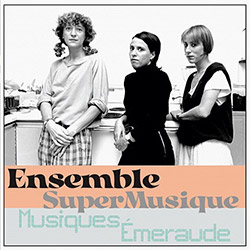




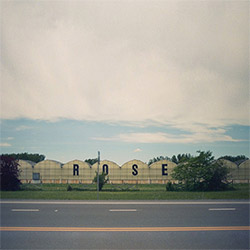
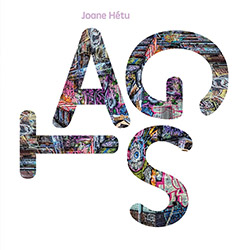



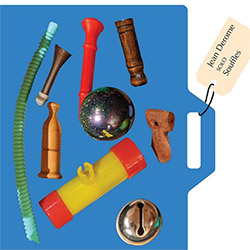
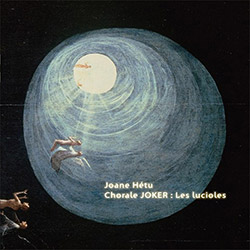


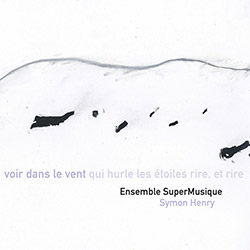

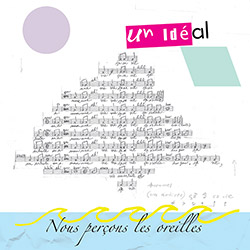

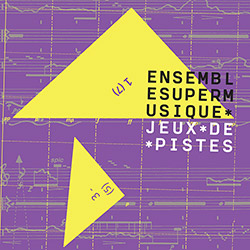
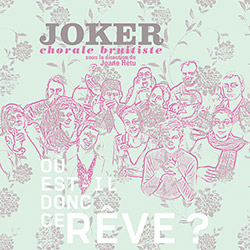
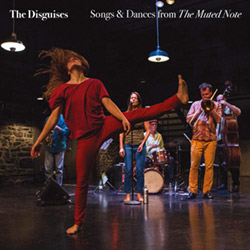

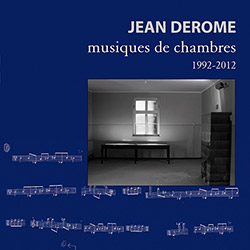



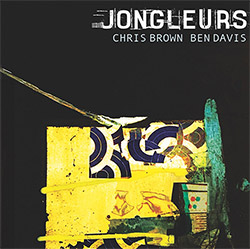
![BlueRing Improvisers: Materia [2 CDs]](https://www.teuthida.com/productImages/misc4/36513.jpg)




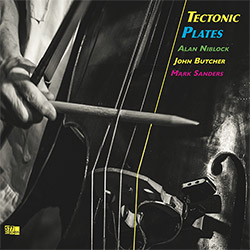


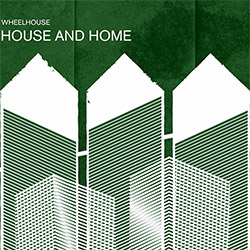
![Wheelhouse (Rempis / Adasiewicz / McBride): House And Home [VINYL]](https://www.teuthida.com/productImages/misc4/36462.jpg)
![+DOG+: The Light Of Our Lives [2 CDs]](https://www.teuthida.com/productImages/misc4/36009.jpg)


![Parker, Evan / Jean-Marc Foussat: Insolence [VINYL]](https://www.teuthida.com/productImages/misc4/36398.jpg)










![Deupree, Jerome / Sylvie Courvoisier / Lester St. Louis / Joe Morris: Canyon [2 CDs]](https://www.teuthida.com/productImages/misc4/36404.jpg)



![Eventless Plot | Haarvol: The Subliminal Paths [CASSETTE + DOWNLOAD]](https://www.teuthida.com/productImages/misc4/36232.jpg)










![Eventless Plot | Francesco Covarino: Methexis [CASSETTE + DOWNLOAD]](https://www.teuthida.com/productImages/misc4/36231.jpg)



![Das B (Mazen Kerbaj / Mike Majkowski / Magda Mayas / Tony Buck): Love [VINYL]](https://www.teuthida.com/productImages/misc4/36329.jpg)


![Eternities: Rides Again [CASSETTE]](https://www.teuthida.com/productImages/misc4/36247.jpg)
![Lopez, Francisco: Untitled (2021-2022) [2 CDs]](https://www.teuthida.com/productImages/misc4/36438.jpg)






![Money : Money 2 [2 CDs]](https://www.teuthida.com/productImages/misc4/35894.jpg)




![Klinga, Erik: Elusive Shimmer [VINYL]](https://www.teuthida.com/productImages/misc4/36258.jpg)
![CHANGES TO blind (Phil Zampino): Volume 9 - I Wave on a Fine Vile Mist [CD + DOWNLOAD]](https://www.teuthida.com/productImages/misc4/36061.jpg)

![Wallmart / Rubbish: Asset Protection [split CD]](https://www.teuthida.com/productImages/misc4/35900.jpg)


![+Dog+: The Family Music Book Vol. 5 [2 CDs]](https://www.teuthida.com/productImages/misc4/35897.jpg)
![Kuvveti, Deli : Kuslar Soyledi [CASSETTE w/ DOWNLOAD]](https://www.teuthida.com/productImages/misc4/36107.jpg)

![Brown, Dan / Dan Reynolds: Live At The Grange Hall [unauthorized][CASSETTE]](https://www.teuthida.com/productImages/misc4/36245.jpg)








![Palestine, Charlemagne / Seppe Gebruers: Beyondddddd The Notessssss [VINYL]](https://www.teuthida.com/productImages/misc4/36206.jpg)
![Palestine, Charlemagne / Seppe Gebruers: Beyondddddd The Notessssss [NEON GREEN VINYL]](https://www.teuthida.com/productImages/misc4/36207.jpg)

![Laubrock, Ingrid: Purposing The Air [2 CDs]](https://www.teuthida.com/productImages/misc4/35639.jpg)

![Yoko, Ono / The Great Learning Orchestra: Selected Recordings From Grapefruit [2 CDs]](https://www.teuthida.com/productImages/misc4/35841.jpg)









![Zorn, John / JACK Quartet: The Complete String Quartets [2 CDs]](https://www.teuthida.com/productImages/misc4/35609.jpg)

![Lonsdale, Eden: Dawnings [2 CDs]](https://www.teuthida.com/productImages/misc4/35480.jpg)



![Sorry For Laughing (G. Whitlow / M. Bates / Dave-Id / E. Ka-Spel): Rain Flowers [2 CDS]](https://www.teuthida.com/productImages/misc4/35985.jpg)

![Rolando, Tommaso / Andy Moor : Biscotti [CASSETTE w/ DOWNLOADS]](https://www.teuthida.com/productImages/misc4/36106.jpg)


![Electric Bird Noise / Derek Roddy: 8-10-22 [CD EP]](https://www.teuthida.com/productImages/misc4/35970.jpg)








![Elephant9 : Mythical River [VINYL]](https://www.teuthida.com/productImages/misc4/34624.jpg)



![Elephant9 with Terje Rypdal: Catching Fire [VINYL 2 LPs]](https://www.teuthida.com/productImages/misc4/35355.jpg)
![Deerlady (Obomsawin, Mali / Magdalena Abrego): Greatest Hits [VINYL]](https://www.teuthida.com/productImages/misc4/34876.jpg)







![Surplus 1980: Illusion of Consistency [CD]](https://www.teuthida.com/productImages/misc4/35069.jpg)
![Staiano, Moe: Away Towards the Light [VINYL + DOWNLOAD]](https://www.teuthida.com/productImages/misc4/35037.jpg)
![Coley, Byron: Dating Tips for Touring Bands [VINYL]](https://www.teuthida.com/productImages/misc4/17906.jpg)

![Lost Kisses: My Life is Sad & Funny [DVD]](https://www.teuthida.com/productImages/misc4/lostKissesDVD.jpg)